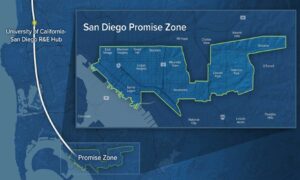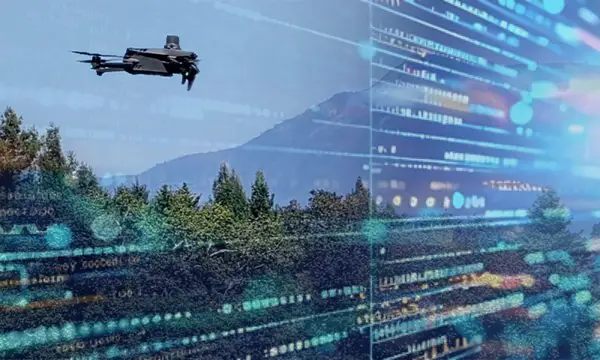- About
- Network
- Community
- Initiatives
- News
- Events
- Blog
- Publications

The San Diego Promise Zone: Connecting Potential with Promise
Categories University of California Equity & Access

When parts of San Diego became one of the twenty-two federally designated Promise Zones in the U.S., the community came together in creative ways to improve the quality of life for all Zone residents. The focus of the initiative is to increase access to everything from affordable housing to jobs, safe environments, educational opportunities, healthcare, and economic activity.
And when CENIC board member Ramesh Rao, director of Qualcomm Institute and UC San Diego professor got involved, digital access for residents became a priority.
“We all want to do something about the inequity we find in our communities, and I think it’s our role to apply the things we are good at to solve problems,” said Rao. “So, for me, I think we can apply my knowledge of wireless networks that can then create a more connected environment.”
That is precisely what Rao is working to do through the new downtown UC San Diego Park & Market location that opened in the fall of 2021.
Recognized as one of the top R&E sites among the UC system campuses, UCSD is recognized for its persistence in expanding the frontiers of what is possible in the world of networking. Along with the San Diego Supercomputer Center (SDSC), its faculty and staff are pioneers in imagining beyond the status quo, and this connection is one more example.

By pulling fiber from UCSD’s main campus in La Jolla to the downtown site, enhanced connectivity was established to support new wireless deployments from the rooftop of that location. That fiber connectivity plus a number of base stations enable this new network to cover most of the Promise Zone.
“We’re now working to refine the reliability of this extended digital connectivity for the zone,” said Rao. “We want to know that the physical infrastructure we’ve established will support the connections this community should have.”
Rao points out that this digital connectivity is important to support the educational programs of UCSD’s eight colleges that are modeled after Oxford University in England, where experiential learning is an expectation for all students.
The potential for this newly connected zone of San Diego elicits energized excitement from Rao.
“As I think of what our university could offer and the unmet needs in the zone, health and education come to mind. We can take health care to people’s homes with this network expansion. And I don’t think there’s a much better use for extended network connections than access to education.”
“I can imagine inviting high school students to sit in on one of our classes from home without having to sign up for an expensive data plan. That way they can see what a class is like and perhaps get excited about subjects they’ve never had access to before. It could change the entire complexion of our campus.”
UC San Diego Chancellor Pradeep Khosla supports the potential of that impact.
“The networking technologies at our new facility at Park and Market and along the UC San Diego Blue Line will enhance connections from the campus to our community, and the community to our campus,” said Khosla. “Park and Market will assemble many talented contributors from across our region to tackle common goals and create something greater than they could on their own.”
For CENIC, this emerging model fits right into its mission of connecting underserved areas as there are other founding members located near areas with little digital connectivity. Learning from UCSD’s experience can help inform what’s possible for others within CENIC’s member institution community. As this project evolves, CENIC looks forward to providing updates on its progress.
Related blog posts
CENIC and San Diego Supercomputer Center Create Sustainable Agriculture for California’s Future
CENIC’s networking and services, including CENIC AIR, can be a vital part of preparing new generations of farmers that will apply the latest technology to agriculture by turning the farm into an educational setting and improving the efficiency of farming as a career.
CENIC Members Enable Data-Driven Agriculture: Optimizing Harvests in a Changing Environment
The use of technology in agriculture to increase yield and decrease resources is the focus of an innovative project fueled by CENIC and its collaborative partners: a novel model of precision agriculture in the vineyards.


